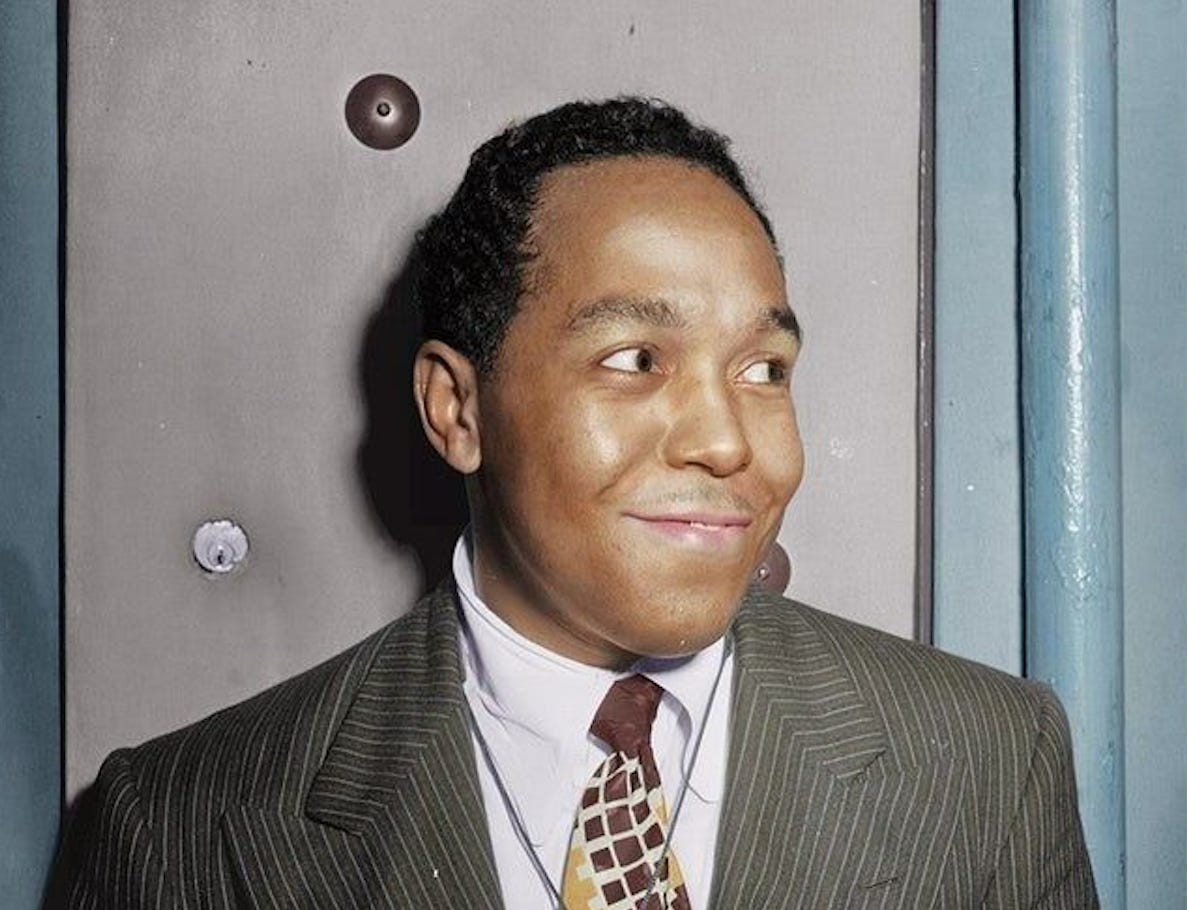First came the music, then came the word to describe it—“bebop.” Today, a look at bebop’s origins. [Photo above of Charlie Parker]
In a nutshell, bebop was a form of small-group jazz that emerged in the mid-1940s in reaction to the rigidity of swing-era big bands. While swing orchestras produced extraordinary music in the 1930s and early ‘40s, most leaders managed them dictatorially and demanded that song arrangements be played precisely as written, without deviation.
On the road, bands were compelled to play songs exactly as they sounded on studio records, day after day, night after night. By 1944, gifted musicians in these bands who wanted to improvise on solos grew increasingly frustrated by the tedium. They either wound up being fired or quit to go out on their own.
The music these musicians played gave all individual members an opportunity to stand out with distinctive solos and playing styles. Blues were often used as the basis for original songs, as were the chord changes to American songbook standards such as (Back Home in) Indiana and Sweet Georgia Brown. Using existing chord changes but not the original melodies allowed musicians to invent new melodies and avoid paying for the publishing rights.
The musicians who pioneered this new form of jazz before it had an official name were alto saxophonist Charlie Parker; trumpeter Dizzy Gillespie; pianists Thelonious Monk, Clyde Hart, Al Haig and Bud Powell; bassists Oscar Pettiford and Curly Russel; and drummers Kenny Clarke and Max Roach, among others.
What set the music apart was its fast tempo, jagged polyrhythms and daring solos. These three elements allowed superb musicians to be recognized and made it virtually impossible for them to be copied by others. The new music became a secret language.
At the time, this new approach sounded chaotic to untrained ears, but it actually had structure, thanks to compositional formulas worked out by Dizzy Gillespie and Charlie Parker.
Who coined the word “bebop?” Probably Dizzy Gillespie. In January 1945, he wrote and recorded a 78 called Be-bop, at first known as Dizzy’s Fingers. As the music grew in popularity that year, disk jockeys and jazz writers began using it to describe the style.
Here are six tracks that illustrate bebop’s early rise in the first half of the 1940s, before the word bebop was used to categorize the music:
Here’s guitarist Charlie Christian improvising on Stompin’ at the Savoy at Minton’s Playhouse in Harlem in 1941, with Kenny Clarke on drums….
Here’s Charlie Parker improvising on Cherokee at Clark Monroe’s Uptown House in New York in early 1942…
Here’s Dizzy Gillespie’s Woody’n You recorded in February 1944. The band featured Dizzy Gillespie (tp), Coleman Hawkins (ts), Clyde Hart (p), Oscar Pettiford (b) and Max Roach (d)…
Here’s Thelonious Monk’s first recording of ‘Round Midnight at Baron Timme Rosenkrantz’s New York apartment in November 1944…
Here’s Dizzy Gillespie’s Groovin’ High in February 1945 with Dizzy Gillespie (tp), Charlie Parker (as), Clyde Hart (p), Remo Palmieri (g), Slam Stewart (b) and Cozy Cole (d)…
And here’s the Charlie Parker Sextet playing Sweet Georgia Brown in May 1945, with Dizzy Gillespie (tp), Parker (as), Don Byas (ts), Al Haig (p), Curly Russell (b) and Stan Levey (d)…
.



Bop rules.
An anecdote about Monk: I was taking classical piano lessons, from a teacher who went to Oberlin and Julilard. She was willing to teach me any music, as long as it was written out. No improvising on chords.
I found a book of Monk songs, fully written out, and I learned Round Midnight. She loved it, as did the other adult students. She said it was as good a song as anything Schubert wrote.
Gracias....saludos¡¡